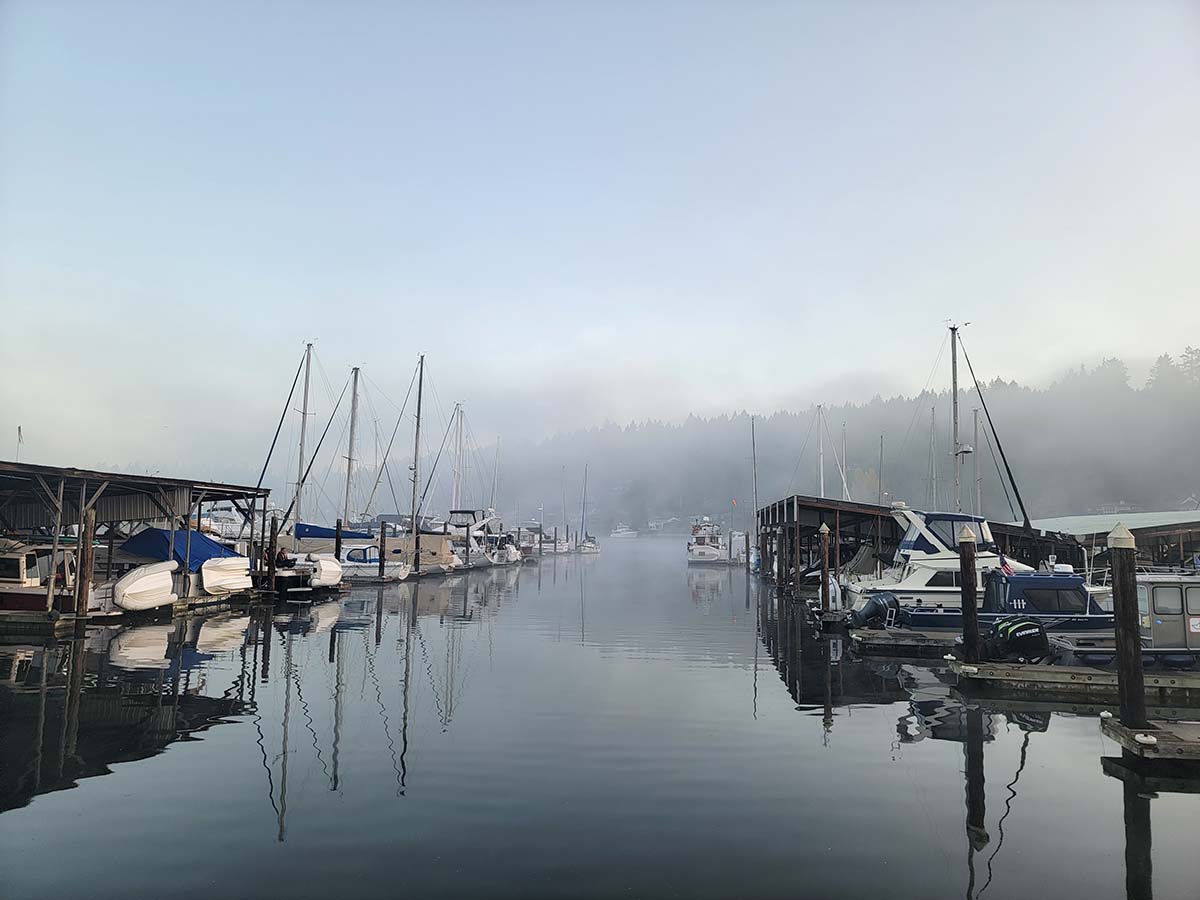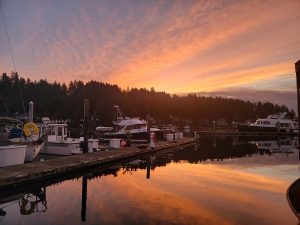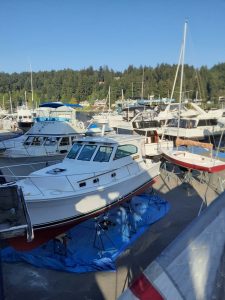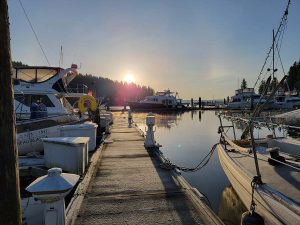
Where have all the boatyards gone?
Published on April 28, 2025A keener awareness of environmental pollutants and surrounding regulations, combined with a generational transformation in who marina customers are and what they expect, has transformed how boatyards operate.
Boatyards were once places where do-it-yourselfers worked side-by-side with skilled marine staff to keep boats in working order and looking sharp. Boating customers of today prefer to relax on the water with family and friends, their lives too busy for boat maintenance. Traditional boatyards have given way to “hospitality centers,” either adding amenities and services or shutting their doors. The change in customers prompted a new business model; however, the influx of environmental regulations and rise in insurance costs may have done even more to alter the boatyard landscape.
There are exceptions. Gig Harbor Marina and Boatyard in Washington is holding on to its roots. While insurance costs forced the facility to phase out DIY work in 2015, the boatyard is the only facility in Gig Harbor that still offers full-service haul out and repairs.

The Old Days
Gig Harbor began its life in 1905 as Skansie’s Ship Building Company. Through the years the company owned a mosquito fleet, later started to build the first ferries in Washington state and eventually began repairs for private recreational boats in the 1950s. At one time, the facility was the largest fishing and boat repair shop on Puget Sound.
Boatyard rules were minimal then, with the extent that boatyard activities impacted water quality not yet fully realized. Yards thought nothing of lifting a boat and pressure washing it over the water, blocking it and crawling underneath to sand and paint without tarps and Tyvek suits. Used solvents and paint cans were tossed in the dumpsters. A sheen in the water from oil and fuel drips was commonplace. It was an easier time to run a boatyard, but waterways were sometimes notoriously polluted.
The Modern Boatyard
Today Gig Harbor is a much different place under the watchful eye of yard manager Patrick Thompson. A retired Navy chief petty officer, Thompson was new to the boatyard industry when he arrived four years ago but has quickly acclimated and is determined to ensure that the future of the waterways and shoreline are pollution-free. “I will do my best to prevent the water from being polluted,” he said. “Clean waters are what keep people boating and fishing. I want my kids to know I never polluted the water, that I did everything I could to keep it clean for them.”
His efforts have paid off as the facility won the Seattle Times’ “Best in the Pacific Northwest” for both its marina and boatyard in 2023 and 2024. The award, based on customer votes, was particularly rewarding for Thompson because he said he was competing with five other yards, including the famed Seattle Boat Company. “We beat them,” he said. “That reflects on my crew and our commitment to always be honest and forthcoming with our customers.”
But it goes a bit deeper than customer communication.
Under the Environmental Protection Agency (EPA), Department of Natural Resources (DNR), Labor and Industries and city rules, Gig Harbor has not only renovated the facilities but has also overhauled how it operates.
Boats are now pressure-washed over a cement pad that drains to a water recycling system before it is filtered and flows back to the watershed. Thompson took that idea a step further and filters the rainwater off the roofs of buildings as well. The staff monitors the water weekly for zinc, oil and copper.

“I invited the Labor and Industries, EPA and DNR to visit, monitor and audit. I wanted them to tell me what I’m doing right and wrong. We now pay an environmental service to monitor the runoff from our parking lots. They do unannounced inspections, and we also do our own,” Thompson said, commenting that his friends and colleagues thought he was crazy. “I’m not trying to hide anything.”
His efforts do not come without a high cost. The facility had to remove two creosote piles and then had to pay about $50,000 to have the mud from which the piles were pulled sampled to ensure there was no further contamination.
Painting has also changed. In the 1980s, boats were put into a shed at the end of a pier and sprayed. That area is now a workshop for mechanics, and painting is done with rollers in the open, over tarps to comply with both water and air quality requirements. The boatyard no longer does spray painting, and contractors and customers are prohibited from doing any painting.
Further complicating painting is the issue of copper paint, which the state of Washington has been working to ban for many years. Until an economical and effective alternative emerges, though, copper paint is still permissible. However, Thompson said the unknown of when it might become banned is challenging to both the boatyard and boaters. “I’m looking at alternatives for when that ban comes. I found an interesting product out of New Zealand where boat hulls are almost shrink-wrapped, but it was expensive,” Thompson said.
Educating the Public
New to the industry, Thompson said he’s been surprised by the lack of knowledge by government officials he’s worked with of how boatyards and marinas operate. “They don’t get the impact of the regulations they oversee or how much boating contributes to the economy,” he said. For example, the town of Gig Harbor prohibits the boatyard from selling fuel, meaning boaters must travel about a half hour to get to a marina that has fuel.
While Thompson said he understands the environmental risk of fuel tanks, he has been surprised that nothing has been done about the regular drips of hydraulic fluids, antifreeze and engine oil. “Boats leak. There’s no real way around that, but something should be done to address it,” he said. “Any amount in the water is bad.”

Regulators are invited to inspect the boatyard so any problems can be identified and fixed.
Thompson also commented that he’s always a bit shocked by boaters who have no idea how their boats work and what can go wrong. “I bring them in and explain how their boats function, why the parts are important and why repairing them is needed. I invite them in and show them why their boat is doing what it’s doing,” he said. He emphasizes to his staff that honest and truthful communication with customers is essential, and he credits that thinking for the boatyard’s success.
Gig Harbor has not only survived, but it absorbed the boatyard work from the nearby facilities that shut down over the years. Thompson said working to stay afloat is constant and credits his military training for his willingness to keep forging ahead and dealing with whatever new rules, regulations and issues pop up. He said it’s not what you know, but what you can prove, and he’s proven he can take on the complexities of a boatyard.
| Categories | |
| Tags |





